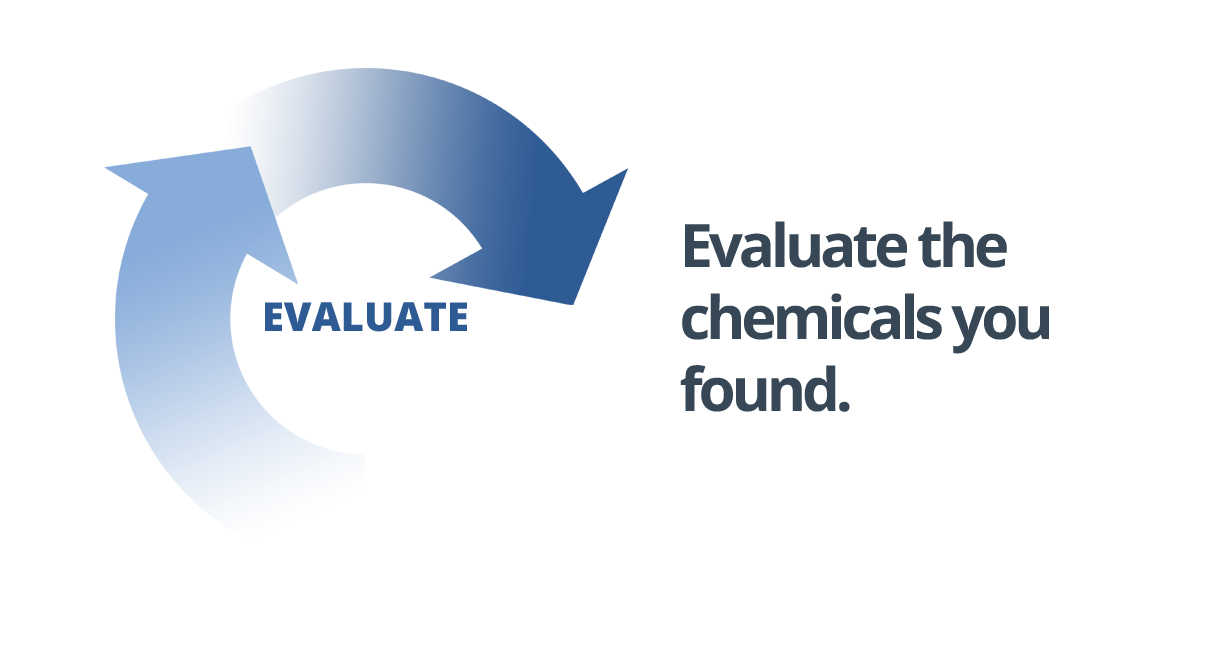This is ChemSec’s
Chemical management is a three step process. Find chemicals, evaluate them and act to replace the hazardous ones.
Step 1
Find chemicals in your supply chain
This is the first step towards a product free of hazardous chemicals and it requires you to do research into the history of your product. What chemicals have been used in the production processes and which ones are present in the finished product when it’s sold to your customers?

Common hazardous chemicals
You don’t have to be a chemical expert, but it’s a good idea to familiarise yourself with some of the most common chemical groups used in textiles.
Compiling information and finding hazardous chemicals
A lot of the information you need to know about the chemical content or your products might be closer than you think.
Step 2
Evaluate chemicals in your supply chain
In textile manufacturing considerable amounts of chemicals are used. Some of these are hazardous and pose a threat to both health and the environment.

Search your chemicals in our database
Get quick information on the chemicals in your products.
Find the hot spots in your product portfolio
Chances are high that you will find out that you have several chemicals that are problematic. It may not be possible, however, to get rid of them at once.
Step 3
Act on hazardous chemicals in your supply chain
Now that you have information about the chemicals in your products, and know if they are restricted or listed as problematic, we’ll describe what your options to act are.





